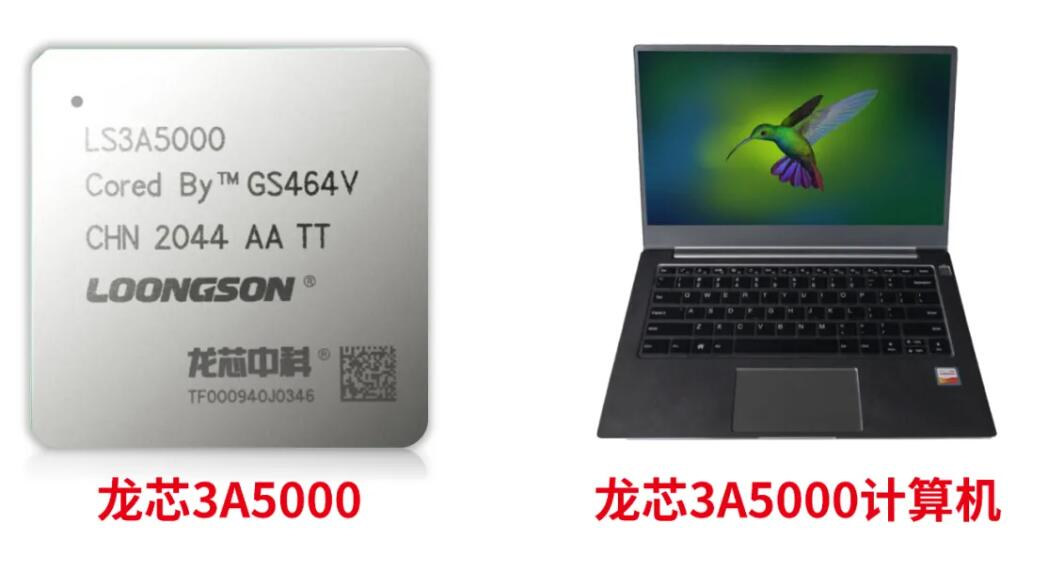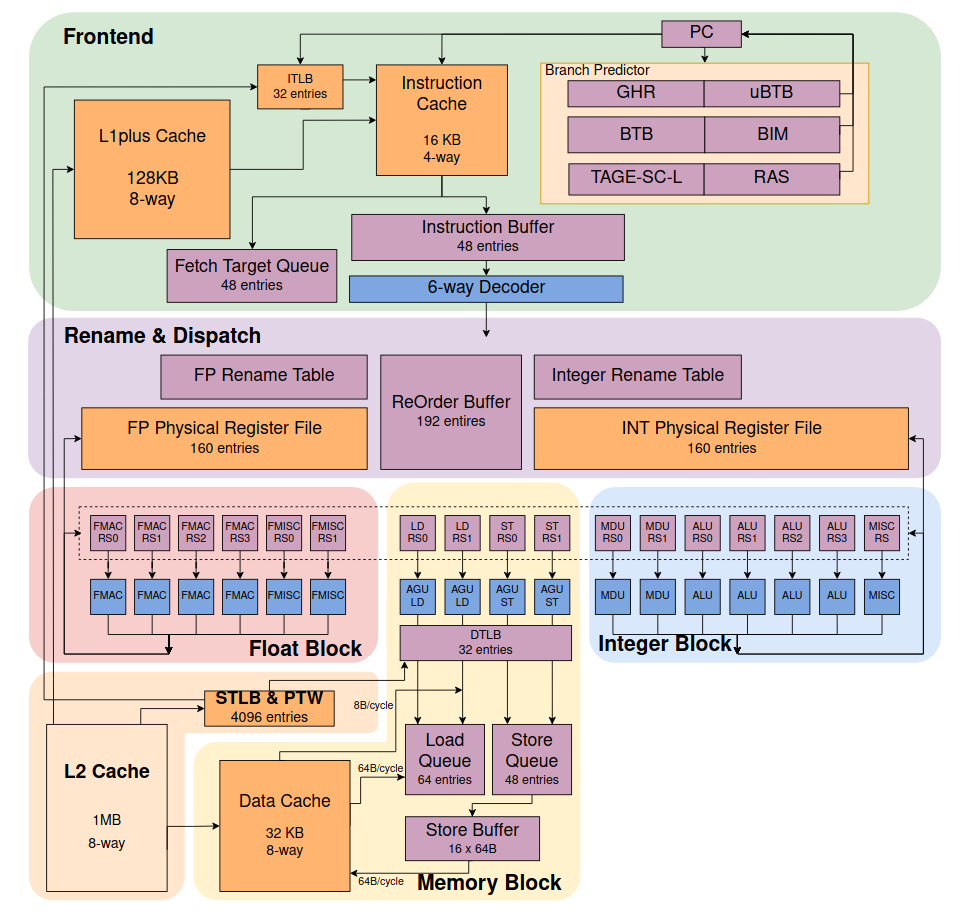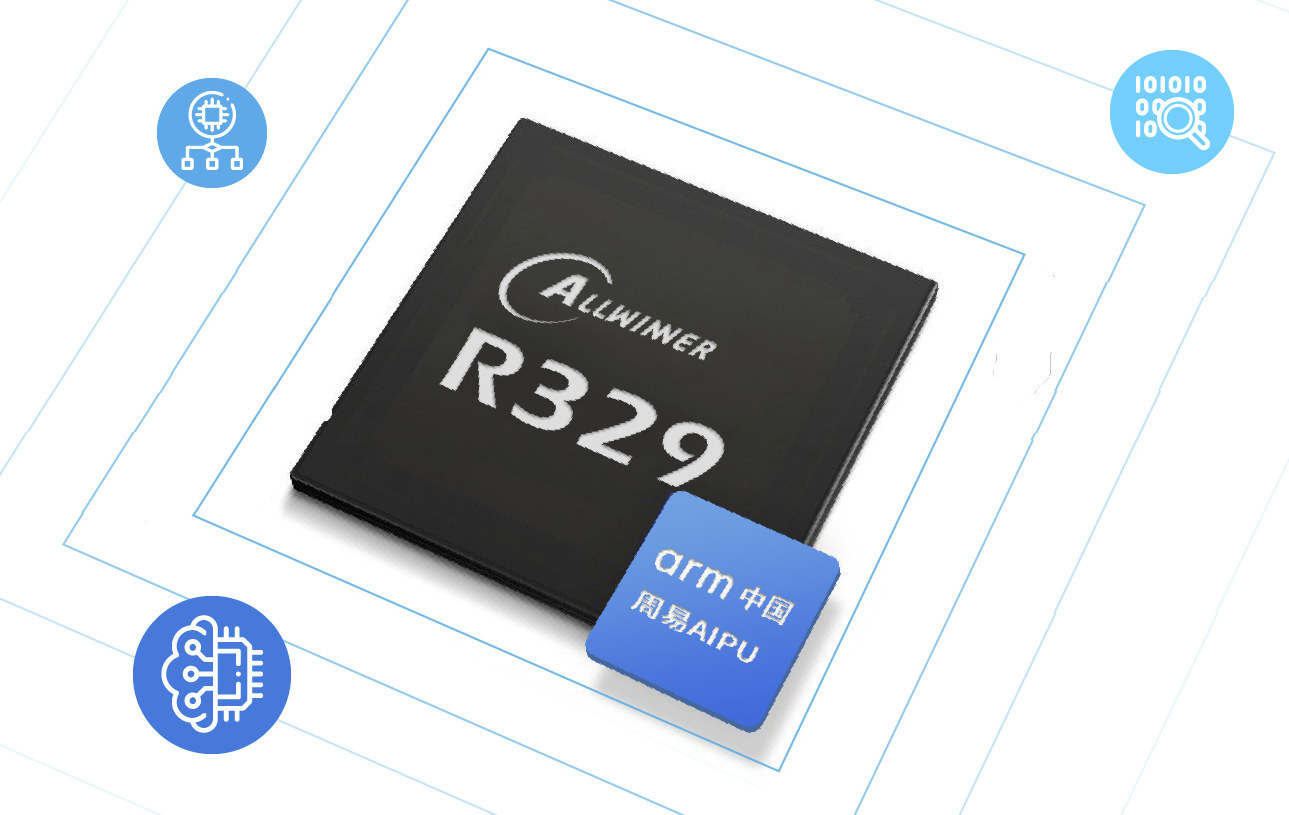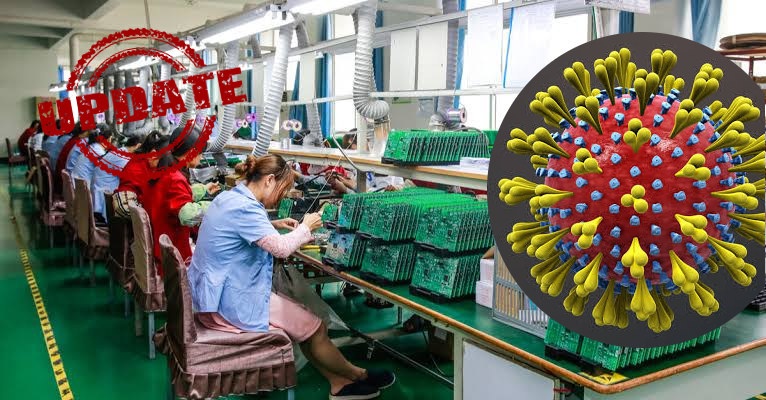Since the beginning of the year, we’ve had a worldwide chip shortage that increased the price of components, followed by long lead times. My Twitter feed is often filled with complaints of expensive components (e.g. STM32 being 10 times more expensive), and ever-increasing lead times of up to two years. But lockdowns and some governments paying people to stay home have completely messed up the supply chain, and with China having reopened a long time ago, many containers are shipping with products from China, only to return half-empty, or not at all. This behavior can be seen in the US trade deficit that almost doubled in the last year or so, and freight rates have gone through the roof for a while, but especially in the recent weeks/months. The chart above shows a container rate of over $10,000 for a 40-foot box from just around $2,000 for years, or […]
Loongson’s first LoongArch processors – 3A5000 for computers, 3C5000L for servers
Loongson has officially launched the first processors based on LoongArch CPU instruction set architecture designed for made-in-China SoCs without the need to license technology made outside of China. Loongsoon LS3C5000L (3C5000L) 16-core server processor clocked at up to 2.5 GHz is now official and is apparently comprised of four LS3A5000 (3A5000) LoongArch processors designed for desktop computers and laptops. Loongson 3A5000 CnTechPost reports Loongson 3A5000 quad-core 64-bit GS464V processor runs at 2.3GHz-2.5GHz. GS464V microarchitecture comes with four fixed-point units, two 256-bit vector operations units, and two access memory units. The processor also includes two 64-bit DDR4-3200 controllers with ECC checksum support, as well as four HyperTransport 3.0 controllers with multi-processor data consistency support. Performance-wise, Loongson 3A5000 is said to achieve 26+ points in the single-core and floating-point SPEC CPU2006 benchmarks, and over 80 in the multi-core version of the benchmarks. That’s about 50 percent higher performance than the previous pin-compatible […]
XiangShan open-source 64-bit RISC-V processor to rival Arm Cortex-A76
SiFive Performance P550 was supposed to be the most powerful RISC-V core to date, capable of outperforming Arm’s Cortex-A75 core in raw performance, but especially in terms of efficiency, with three times the performance per mm2. But there may be an even more powerful RISC-V processor, albeit developed as a research project, with the Chinese Academy of Science (CAS)’s XiangShan open-source processor presented at the recent RISC-V World Conference China 2021 with the goal of matching Cortex-A76 performance. The project was launched on June 11, 2020, and 25 classmates and teachers participated in the development of Xiangshan with 821 main branch code mergers, 3296 code submissions, more than 50,000 lines of code, and more than 400 documents, mostly in Chinese only for now. This culminated with an 8-core prototype built based on Yanqihu (雁栖湖) architecture using TSMC’s 28nm process with the processor running up to 1.2 or 1.3 GHz that […]
Huawei Qingyun L410 Linux laptop is powered by Kirin 990 Arm processor
While it’s already possible to purchase an Arm Linux laptop like PineBook Pro, the Rockchip RK3399 processor, and 4GB RAM may be limiting to some, especially when wanting to multitask. But most likely out of necessity, Huawei has unveiled a more powerful Arm Linux laptop with Huawei Qingyun L410 powered by a 7nm Kirin 990 octa-core Cortex A76/A55 processor, coupled with 8GB RAM, up to 512GB of storage, and a 14-inch display. Huawei Qingyun L410(L410 KLVU-WDU0) preliminary specifications: SoC – Hisilicon Kirin 990 octa-core processor with 2x Cortex-A76 @ 2.86GHz, 2x Cortex-A76 @ 2.09GHz, 4x Cortex A55 @ 1.86GHz, Arm Mali-G76MP16 @ 700 MHz, DaVinci NPU System Memory – 8GB LPDDR4-4266 Storage – Up to 512 UFS of storage (SSD or UFS 3.0 TBC) Display – 14-inch 2K display with a 3:2 aspect ratio Camera – “hidden camera” Video – 4K 60fps video support Misc – Fingerprint sensor Dimensions – […]
HybridOS is an open-source operating system designed for smart IoT devices and cloud computing environment
As I wrote about the “Summer 2021 of Open Source Promotion Plan” earlier, I noticed a new open-source operating system called HybridOS described as “totally new” and designed for “smart IoT devices and cloud computing environment”. It’s actually more of an ecosystem than an operating system, as it offers three main components with a device side running on devices running Linux kernel or another POSIX-compatible kernel, a server side running on servers in the cloud, and a client side to manage the cloud and devices from Windows, Linux distributions, iOS, or Android. HybridOS Device Side relies on several open-source projects including: hiWebKit, the HybridOS derivative of WebKit: hiACEJS, the HybridOS derivative of OpenHarmony ACELite hiViewRenders, the renderers for hiview tag of hiWebKit hiShell, the app running environment (the shell) Various Graphics stacks including hiMesa, the HybridOS derivative of Mesa hiCairo, the HybridOS derivative of Cairo: hiDRMDrivers, DRM Drivers for HybridOS […]
Summer 2021 of Open Source Promotion Plan is China’s alternative to Google Summer of Code
China has now an alternative to the Google Summer of Code, an international annual program in which Google awards stipends to students who successfully complete a free and open-source software coding project during the summer. China’s alternative is called “Summer 2021 of Open Source Promotion Plan”, also known as “summer 2021” for short, and is organized by the Institute of Software Chinese Academy of Sciences and the openEuler community. It’s a global program open to college students around the world who want to participate in the development and maintenance of open-source software. There’s only one specific requirement to be able to apply: be at least 18 years old at the time of registration. Selected students will be paid according to the complexity of the project with 12000 RMB ($1,867), 9000 RMB ($1,400), or 6000 RMB ($933) “bonuses” to be distributed at the end of the project. Other stakeholders include the […]
Allwinner R329 Smart Speaker Processor Features Arm China’s AIPU (Artificial Intelligence Processing Unit)
Allwinner R328 is a dual-core Cortex-A7 processor with 64MB or 128MB built-in RAM designed for low-cost smart speakers that was introduced last year and found into smart speaker sold in mainland China. According to a recent press release (in Chinese only), the company has now released a 64-bit update with Allwinner R329 dual-core Cortex-A53 processor equipped with dual HIFI4 DSP for audio post-processing and pre-processing, as well as Arm China’s AIPU (Artificial Intelligence Processing Unit) delivering up to 0.256 TOPS at very low power. There’s no product page for Allwinner R329 yet, so I extracted some specifications from the press release: CPU – Dual-core Cortex-A53 @ up to 1.5 GHz DSP- Dual-core HIFI4 DSP @ 400 MHz AI Accelerator – Arm China AIPU with 0.256 TOPS Built-in DDR RAM Audio Embedded second-generation VAD hardware 5x audio ADCs 2x audio DACs with 100dB SNR I2S and DMIC controller 5-1-channel and 7.1 […]
Coronavirus Update: Many Chinese Companies to Stay Closed at Least until February 17
About 10 days ago, I wrote a post about the impact of the coronavirus on manufacturing and shipping from China. At the time, we knew the Chinese New Year “holiday” was extended until February 10 in order for the authorities to contain the outbreak. That meant manufacturing would be impacted, and not much will ship from China during that time period. At the time, we were also told packages shipped from China were safe as it took several days and the virus would just die off on the way. But there have been some updates since then. First, a new study shows the coronavirus may stay alive on surfaces like metal, glass or plastic for up to 9 days at room temperature. So I’m not sure what that means for packages sent via courier services like FedEx or DHL. The previous link offers some solutions: … but can be efficiently […]










